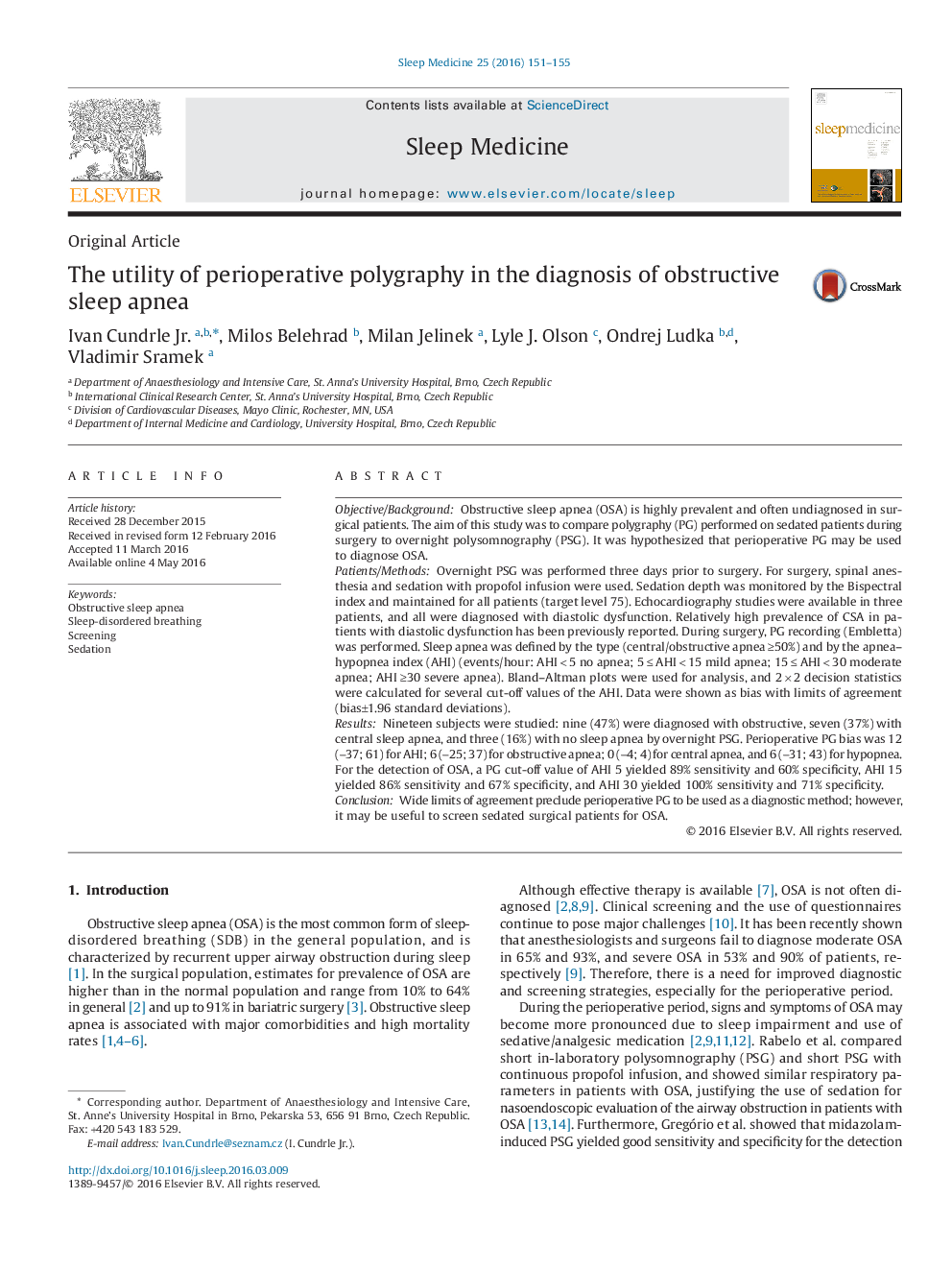| کد مقاله | کد نشریه | سال انتشار | مقاله انگلیسی | نسخه تمام متن |
|---|---|---|---|---|
| 5643944 | 1586483 | 2016 | 5 صفحه PDF | دانلود رایگان |
- Performance of polygraphy during surgery is feasible and yields small systemic bias.
- Wide limits of agreement preclude polygraphy to be used for definitive diagnostics.
- High sensitivity and specificity allow polygraphy to be used for obstructive sleep apnea screening.
Objective/BackgroundObstructive sleep apnea (OSA) is highly prevalent and often undiagnosed in surgical patients. The aim of this study was to compare polygraphy (PG) performed on sedated patients during surgery to overnight polysomnography (PSG). It was hypothesized that perioperative PG may be used to diagnose OSA.Patients/MethodsOvernight PSG was performed three days prior to surgery. For surgery, spinal anesthesia and sedation with propofol infusion were used. Sedation depth was monitored by the Bispectral index and maintained for all patients (target level 75). Echocardiography studies were available in three patients, and all were diagnosed with diastolic dysfunction. Relatively high prevalence of CSA in patients with diastolic dysfunction has been previously reported. During surgery, PG recording (Embletta) was performed. Sleep apnea was defined by the type (central/obstructive apnea â¥50%) and by the apnea-hypopnea index (AHI) (events/hour: AHIâ<â5 no apnea; 5ââ¤âAHIâ<â15 mild apnea; 15ââ¤âAHIâ<â30 moderate apnea; AHI â¥30 severe apnea). Bland-Altman plots were used for analysis, and 2âÃâ2 decision statistics were calculated for several cut-off values of the AHI. Data were shown as bias with limits of agreement (bias±1.96 standard deviations).ResultsNineteen subjects were studied: nine (47%) were diagnosed with obstructive, seven (37%) with central sleep apnea, and three (16%) with no sleep apnea by overnight PSG. Perioperative PG bias was 12 (â37; 61) for AHI; 6 (â25; 37) for obstructive apnea; 0 (â4; 4) for central apnea, and 6 (â31; 43) for hypopnea. For the detection of OSA, a PG cut-off value of AHI 5 yielded 89% sensitivity and 60% specificity, AHI 15 yielded 86% sensitivity and 67% specificity, and AHI 30 yielded 100% sensitivity and 71% specificity.ConclusionWide limits of agreement preclude perioperative PG to be used as a diagnostic method; however, it may be useful to screen sedated surgical patients for OSA.
Journal: Sleep Medicine - Volume 25, September 2016, Pages 151-155
